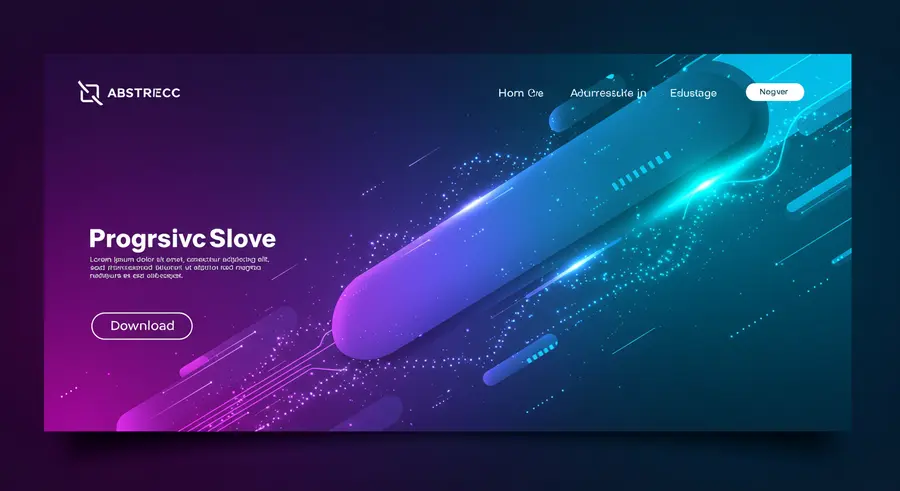Appearance

Welcome, tech innovators and digital enthusiasts! 👋 Today, we're diving deep into a technology that's been quietly but powerfully transforming the web: Progressive Web Apps (PWAs). If you've ever wondered how some websites feel just like native mobile apps, even without an app store download, you've likely encountered the magic of PWAs. They are truly blurring the lines between web and mobile, offering a seamless, app-like experience directly from your browser.
For a foundational understanding, you can explore more about the power of PWAs in our catalogue here: The Power of Progressive Web Apps (PWAs).
What Exactly Are PWAs? 🤔
At their core, PWAs are web applications that leverage modern web capabilities to deliver an experience akin to native mobile applications. They are not entirely new; the concept was introduced by Google in 2015. The beauty of PWAs lies in their "progressiveness" – they work for every user, regardless of browser choice, because they are built with progressive enhancement as a core tenet.
Think of them as the best of both worlds:
- Reach of the Web: Accessible via a URL, no app store submission required.
- Experience of an App: Fast, reliable, engaging, and often installable to the home screen.
Key Characteristics of a PWA 🌟
PWAs stand out due to a set of core characteristics that make them incredibly powerful:
Reliable (Offline Capability): Thanks to Service Workers, PWAs can cache resources, allowing them to load instantly even when the network is unstable or completely offline. Imagine checking your favorite news site on a subway without internet – that's PWA power!
- Service Worker Example (Conceptual):javascriptThis snippet shows a basic service worker caching static assets during installation and serving them from the cache if available during fetch requests.
// In your service-worker.js file self.addEventListener('install', (event) => { event.waitUntil( caches.open('my-pwa-cache-v1').then((cache) => { return cache.addAll([ '/', '/index.html', '/styles.css', '/app.js', '/images/logo.png' ]); }) ); }); self.addEventListener('fetch', (event) => { event.respondWith( caches.match(event.request).then((response) => { return response || fetch(event.request); }) ); });
- Service Worker Example (Conceptual):
Fast (Performance Optimized): PWAs prioritize speed. Optimized loading times lead to better user engagement and lower bounce rates. Techniques like lazy loading, image optimization, and efficient caching contribute to their snappy performance.
Engaging (App-like Experience):
- Push Notifications: Re-engage users with timely, personalized updates, similar to native apps.
- Add to Home Screen (A2HS): Users can "install" the PWA directly to their device's home screen, making it launchable like any other app, often without the browser's UI.
- Full Screen Mode: Provides an immersive experience, removing browser distractions.
- Device Hardware Access: Access to features like camera, GPS, and accelerometer (with user permission).
Why the PWA Revolution is Gaining Momentum 📈
The market for PWAs is booming, expected to reach significant valuations in the coming years. But why are businesses and developers increasingly turning to PWAs?
- Cost-Effectiveness: Develop once, deploy everywhere! A single codebase works across multiple platforms (web, Android, iOS), significantly reducing development and maintenance costs compared to separate native apps.
- Wider Reach: No app store barriers means instant access for anyone with a web browser, dramatically expanding your potential user base.
- Improved SEO: As web pages, PWAs are indexable by search engines, boosting discoverability.
- Lower Data Usage: Efficient caching and smaller initial download sizes save users data and storage.
- Seamless Updates: Updates are deployed instantly to the web server, eliminating the need for users to manually update their app.
Real-World Success Stories 🏆
Many major players have adopted PWAs and seen incredible results:
- Twitter Lite: Reduced data usage by 70%, sent 25% more tweets, and saw a 65% increase in pages per session.
- Starbucks: Their PWA allowed users to browse the menu, customize orders, and add items to their cart offline, leading to a 2x increase in daily active users.
- Trivago: Increased engagement by 150% for users who added their PWA to the home screen.
These examples highlight the tangible benefits PWAs bring to businesses and users alike.
The Future is Progressive: PWAs in 2025 and Beyond ✨
The trajectory for PWAs is clear: continued growth and deeper integration with evolving web technologies. We can expect:
- Deeper Device Integration: More access to device hardware features, further blurring the lines with native apps.
- AI and Machine Learning Integration: Personalized user experiences, smarter recommendations, and predictive functionalities powered by AI.
- Enhanced Performance with WebAssembly (WASM): Allowing near-native performance for computationally intensive tasks directly in the browser.
- Broader Adoption: More industries will embrace PWAs for their flexibility, reach, and cost-effectiveness.
The web is evolving, and PWAs are at the forefront of this evolution, promising a future where app-like experiences are universally accessible and incredibly powerful. Embrace the PWA revolution – it's here to stay! 🚀
Keywords: PWA, Progressive Web Apps, Web Development, Mobile Web, Service Workers, Web App Manifest, Offline Capability, WebAssembly, App-like Experience, Future of Web.